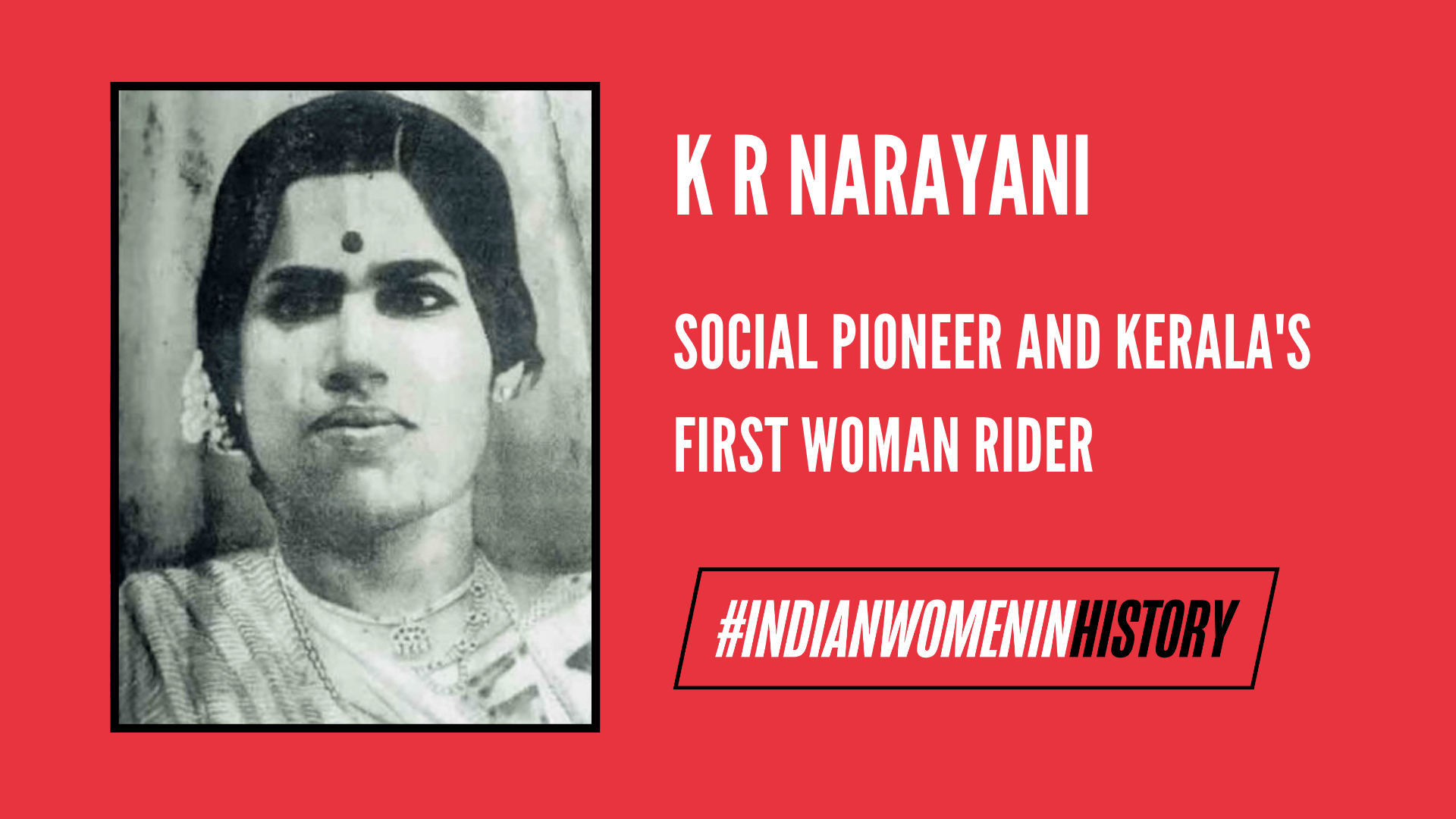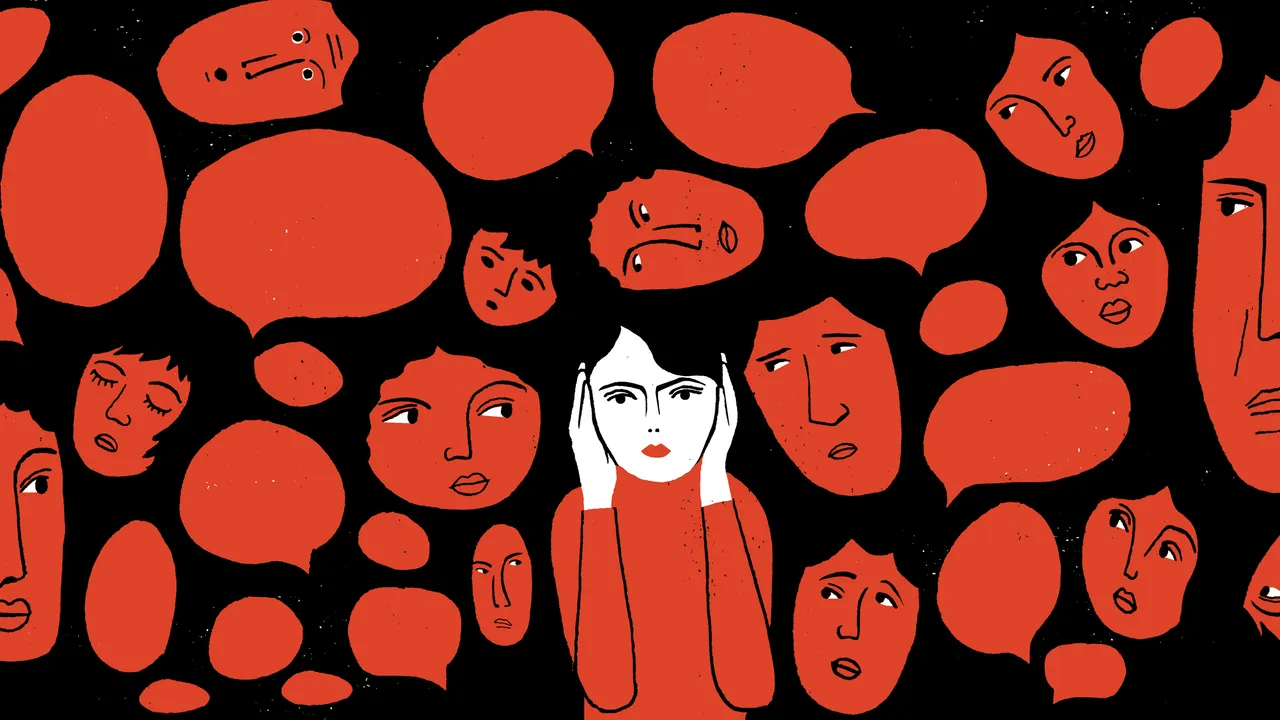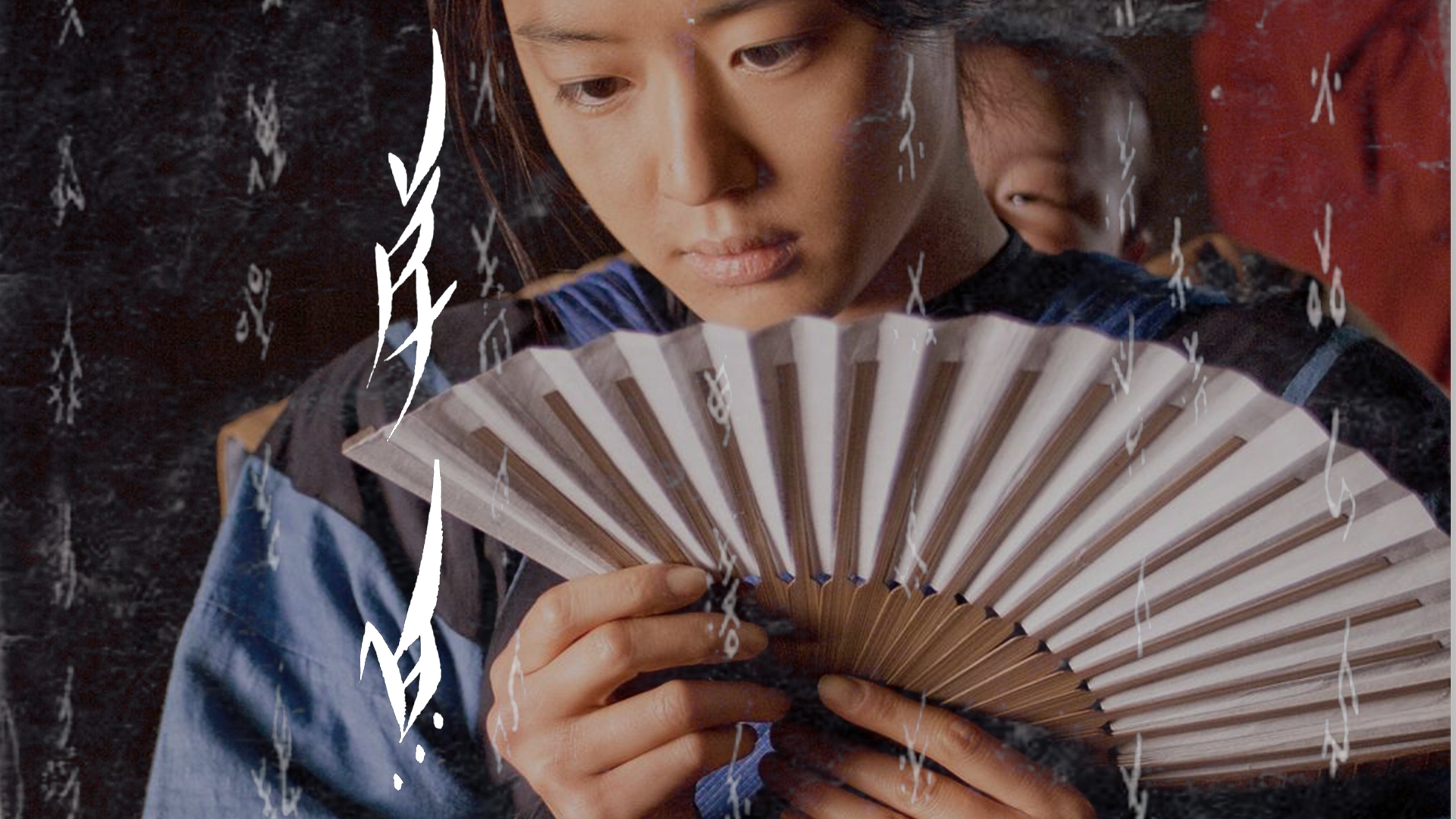When a young woman, with the ends of her six-yard sari tucked up, zipped past riding a motorcycle, the people of the coastal town of Alappuzha, Kerala, gazed in awe and open disapproval and muttered to themselves, “A woman riding a motorcycle! What is becoming of our society? Surely, ‘Kaliyugam’ is here,” referring to the mythical age of decadence.”
The year was 1930, when motor vehicles themselves were a rare sight on the country’s roads, leave alone a woman riding a motorcycle.
Kalathiparambil Raman Narayani was born in Pattanakad, in Kerala’s Alappuzha district, to K.A Raman and A.P Parvathi in 1902. She was the eldest of their seven children. She attended school and college in Thiroor (Alappuzha) and went on to pursue singing. A master of the arts, she participated in classical music concerts where she sang and played the veena.

Naryani married R. Keshavan, an employee of the British Petroleum Company in Persia (present day Iran) in 1922. It would take many days of travel to reach West Asia back then and Keshavan wished to take his wife along with him to Persia, but Narayani decided to stay back in Alappuzha.
K.R Narayani was the elder sister of K.R. Gowri, the legendary revolutionary icon, the only female member of Kerala’s first democratically elected government and the first female minister in Kerala.
Riding a motorcycle, re-marrying, sticking to her surname: A life of courageous autonomy
Keshavan gifted Narayani a Royal Enfield-model 505 after she gave birth to their son. The bike, attached with a side car had been shipped from the UK. He hired a driver to drive the vehicle with Narayani and her son around the town. Soon Narayani convinced the driver to teach her how to drive the motorcycle.
Narayani’s first obstacle was to figure out how to comfortably drive a bike wearing a saree. She chose to lift the ends of her saree and crease it to the top so as to cross her legs over the bicycle. Although she faced severe criticism, she paid no heed as she rode the motor-cycle through the junctions of 11th mile in Alappuzha.

The criticism drove her to prove those who challenged her wrong. She proceeded to drive the bike for quite a long time, but however halted, as a result of her father’s advice who claimed that our society had not grown to accept a woman driving a motor-cycle.
Narayani divorced Kesavan and married N.R Krishnan, lawyer and leader of the Sree Narayana Dharma Paripalana Sangham. For a woman in the 1930s to divorce her husband out of her free will and re-marry was a big step. Narayani also refused to accept her spouse’s last name and stuck to her own surname
She used to seat her son and her sister-Gowri in the side car while she drove through. Gowri fondly remembers her elder sister’s life through her auto-biography thus, “A large number of people from the crowd mocked her for driving the bike which enraged her further, she made us sit in the side car of the Enfield and would ride up the 11th mile, and the roads were quite uneven and sandy back then”.
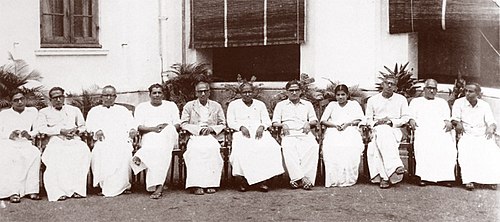
Also read: The Ezhava Bahujan Leader KR Gouri Amma’s War Against Feudal Policies In Early Kerala
Later on, Narayani divorced Kesavan and married N.R Krishnan, lawyer and leader of the Sree Narayana Dharma Paripalana Sangham. For a woman in the 1930s to divorce her husband out of her free will and re-marry was a big step. Narayani also refused to accept her spouse’s last name and stuck to her own surname. Narayani and Krishnan have two daughters together.
Genuine philanthropist and social pioneer
The Second World War broke out in September 1939. This meant that Kerala, which was divided into Cochin, Malabar, South Canara and Travancore would face multiple famines, food shortage and epidemics due to the war. Narayani played a crucial role in establishing the Sree Narayana Mission Hospital in Alappuzha for the betterment of those affected by diseases.
Narayani made efforts to help the poor female labourers by by collecting coconut husks available around her house. She would give it to them and later buy it off them after they process it into coir. After the war, there was an increase in the demand for coir and she managed to sell the coir off for 14,000 rupees, approximately the value of a crore in the current value of money.
Female bike riders lack representation in media as most ads for bikes feature hyper-masculine male bodies. while scooter-ads mainly feature women. This is not the case in real life as there are so many women who drive bikes to colleges and work places. Narayani is an evergreen source of motivation for women who aspire to ride motor-cycles
A staunch believer in philanthropy, she used the proceeds she got from selling the coir and established an orphanage for children adjacent to the hospital. Disturbed by the lack of services for pregnant women in Alappuzha, she used the rest of the proceedings to open up a gynecology and maternity ward at the hospital.
Narayani also joined together with the other women of The Young Women’s Hindu Association to safeguard the interests of the orphanage and the poor. She also opened up an academy for nurses to aid in the medical treatment available for the public at large in Alappuzha.
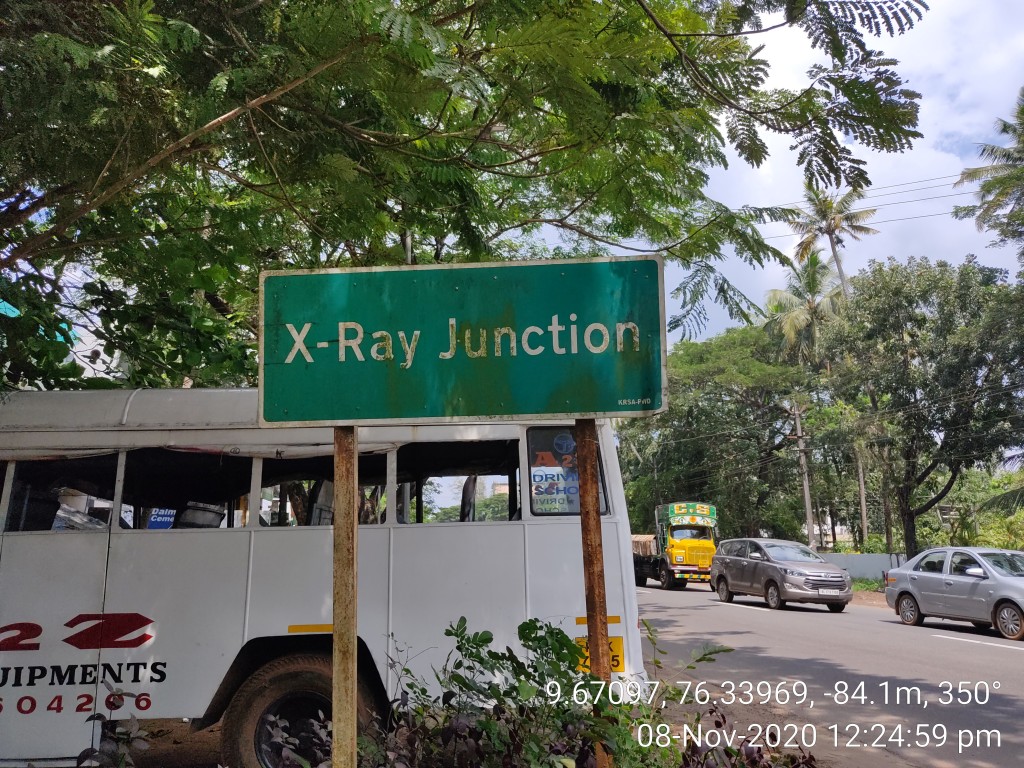
She was diagnosed with tuberculosis and succumbed to her illness in Nagercoil in 1946.
N. R Krishnan later established the X-ray ward at the hospital in memory of his wife. The street leading to the Sree Narayana Mission Hospital is named the X-ray junction as a tribute to the hospital for first bringing in the facility in Alappuzha.
Female bike riders lack representation in media as most ads for bikes feature hyper-masculine male bodies. while scooter-ads mainly feature women. This is not the case in real life as there are so many women who drive bikes to colleges and work places. Narayani is an evergreen source of motivation for women who aspire to ride motor-cycles.
Narayani’s motorcycle stands against time as a symbol of her strength and courageous autonomy.
Also read: Woman Of The Year And Frontline Worker: The story Of Kerala’s Beloved K.K. Shailaja
About the author(s)
Nikitha Sudhir is a journalist who is driven by a passion for curating meaningful narratives while navigating through a male-dominated space. Instead of deterring through the problem, it enabled her to strongly develop her feminist identity. With impactful articles published in Gulf News, Khaleej Times and Campaign Middle East, she strives to challenge biases and embrace inclusivity through her articles.
